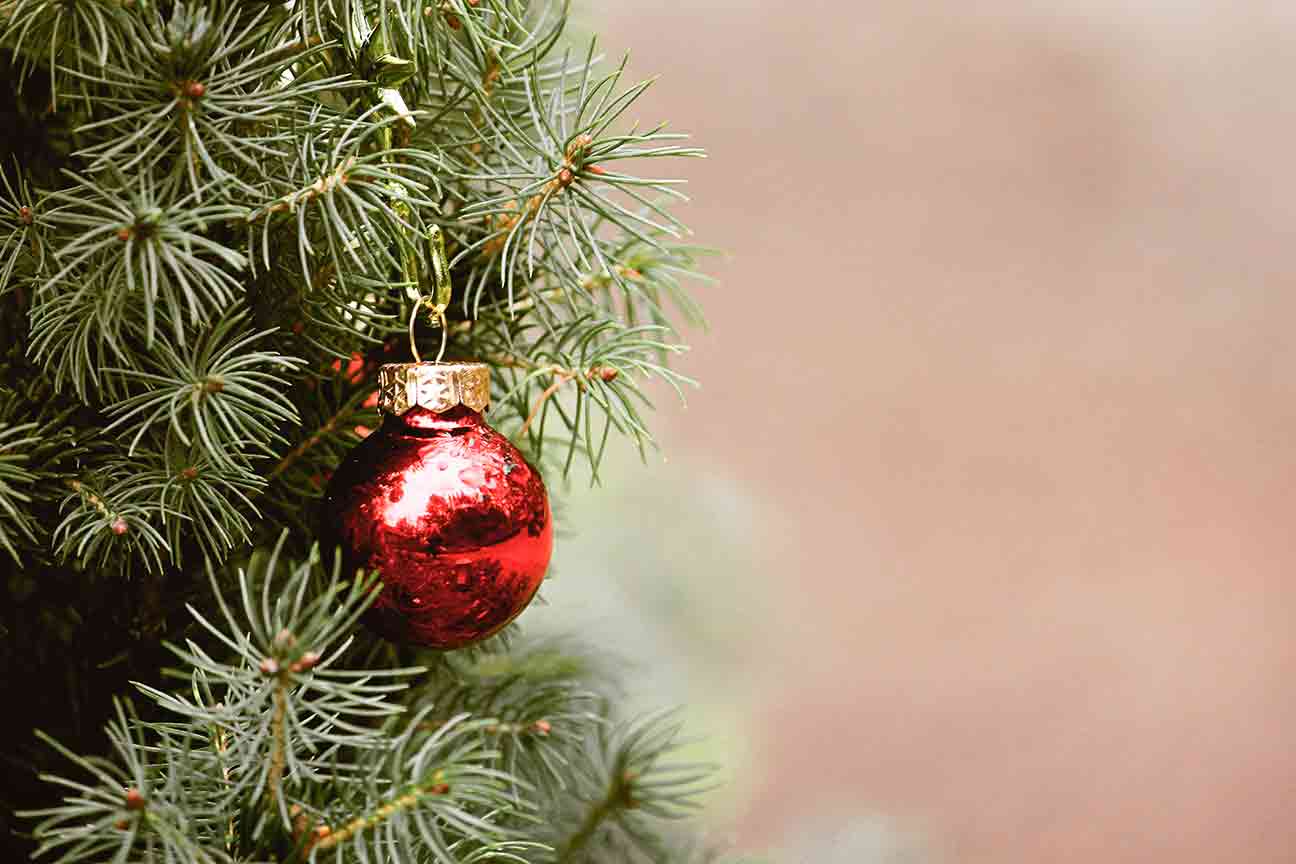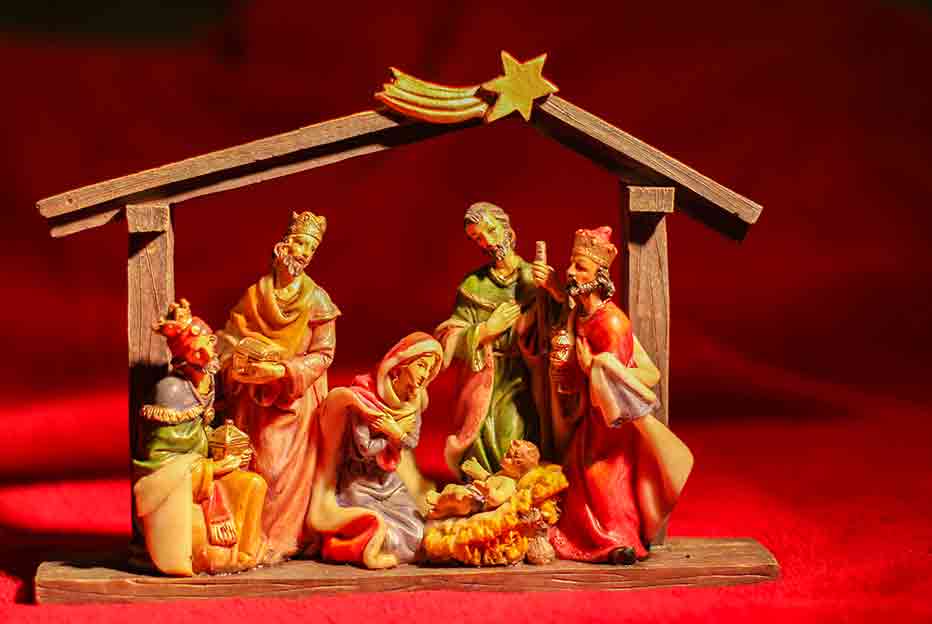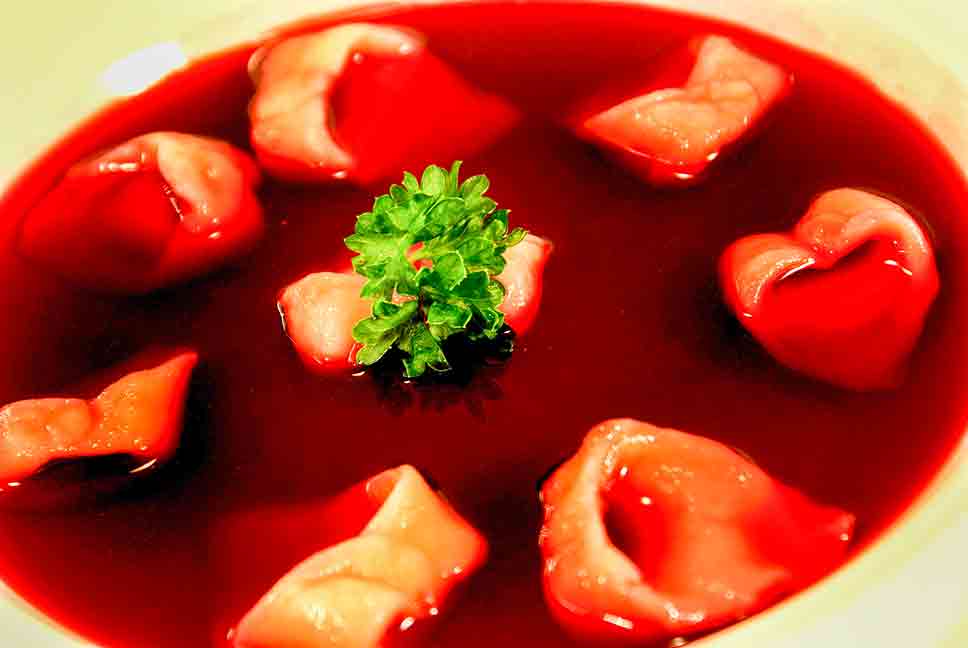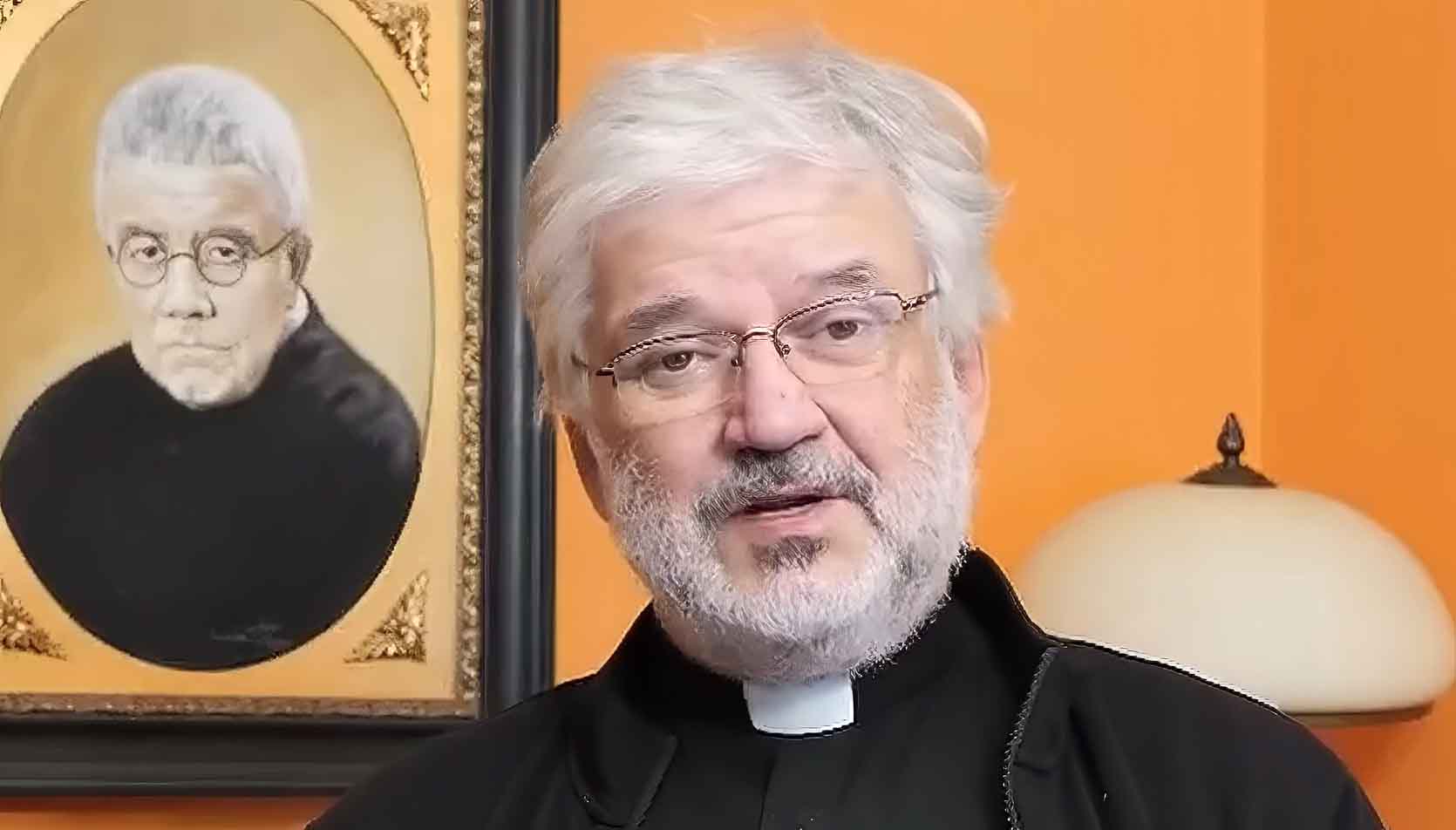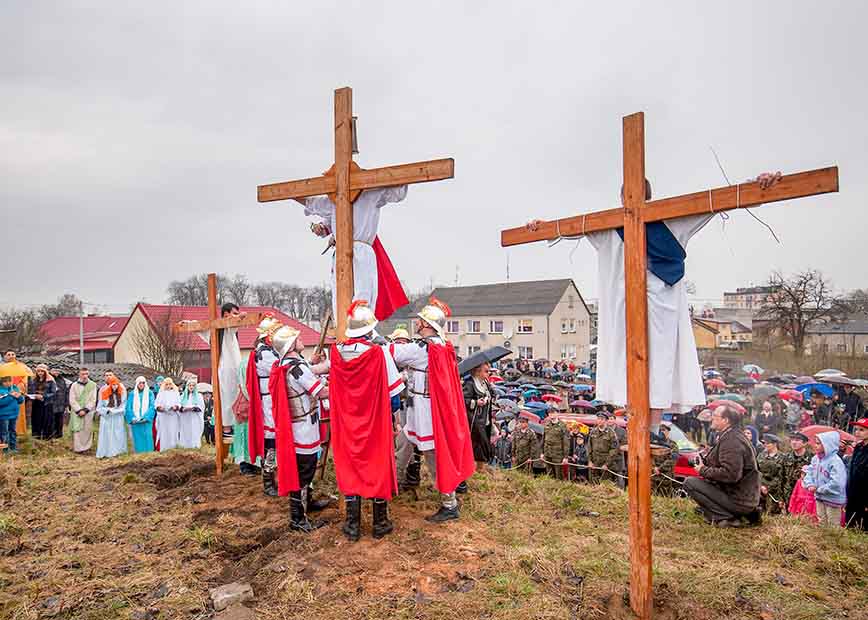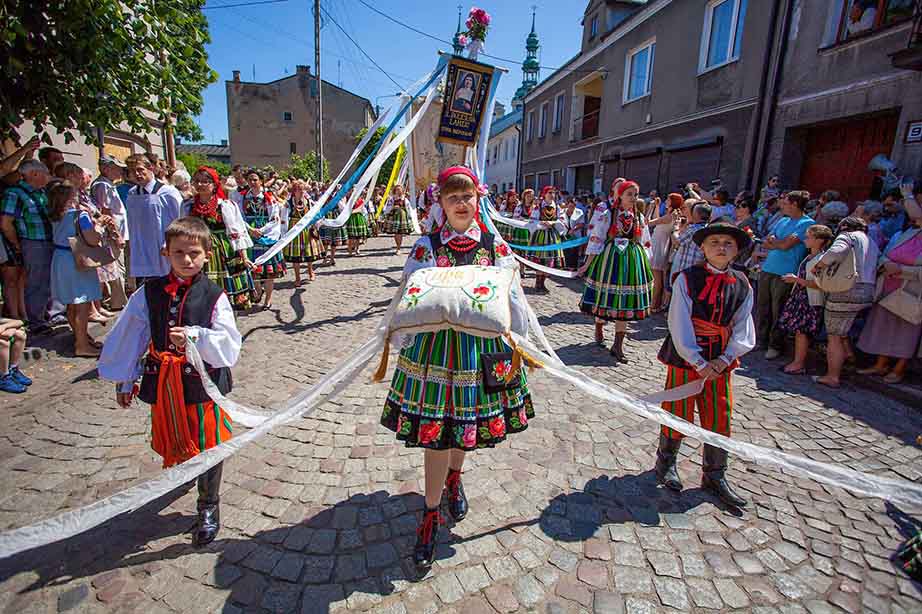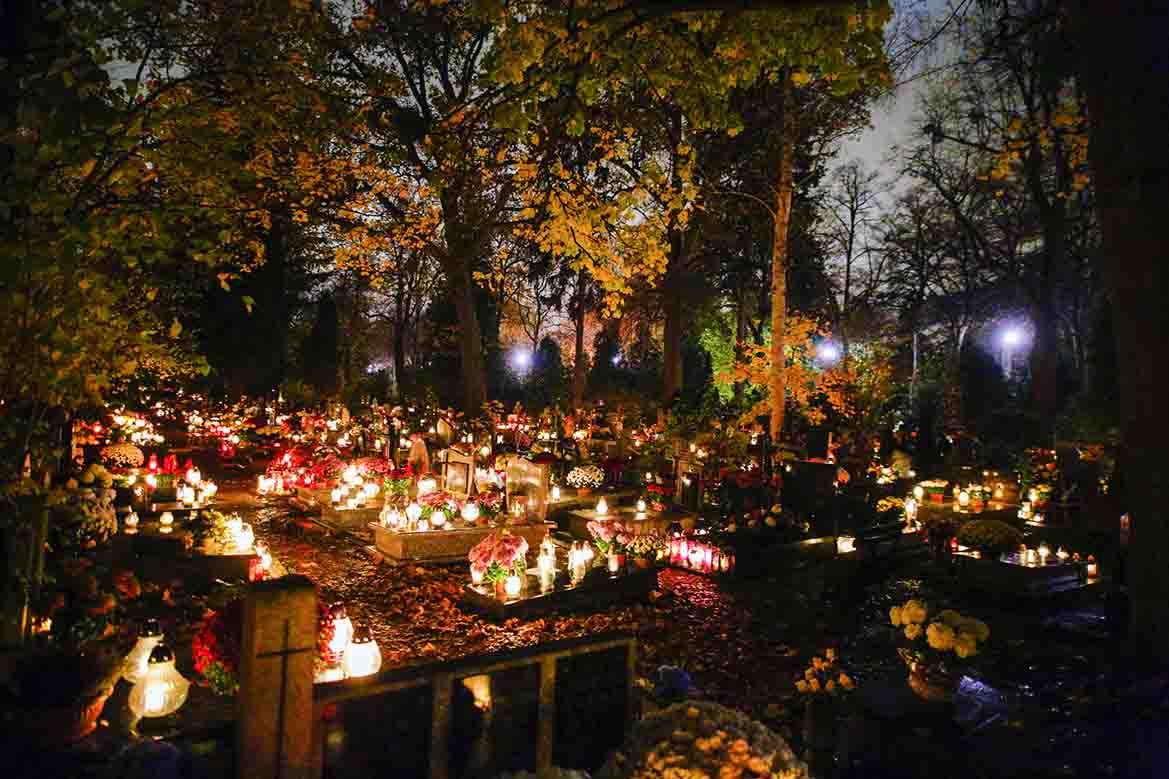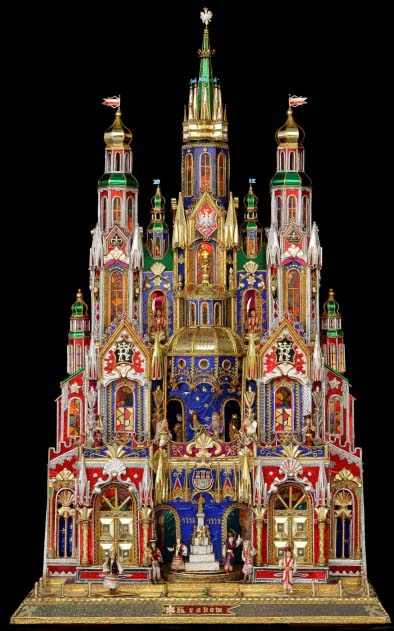Christmas in Poland is generally a family holiday and is most often celebrated in the company of loved ones, while Christmas Eve is the most festive part of it, the one that children invariably associate with presents under the Christmas tree.
Illustration: © Marcin Woźniewicz
In many countries around the world, including the USA, the UK, and the Netherlands, Christmas Eve is not considered a special occasion worth celebrating. It is an ordinary working day. A festive dinner is held there on Christmas Day, December 25, which is also the day when people give each other gifts.
In Poland, Christmas Eve, December 24, is considered the most special night of the year. It is a night on which, according to legend, even animals speak with a human voice. The tradition of celebrating Christmas Eve is inherently associated with an official supper held within the closest family circle, during which only vegetarian dishes are consumed.
Many Christmas customs and superstitions have their origins in pre-Christian rituals and beliefs. There are also many - let's just say - surprising customs like, for example, the placement of the Christmas Eve carp scales in one's wallet, which is supposed to bring financial prosperity to the bearer in the coming year.
St. Nick's Day (Mikołajki)
A foretaste of the Christmas that takes place in Poland already on December 6, is the day known as Mikołajki (St. Nicolaus name day), the unofficial beginning of the Christmas season. On this day - or more precisely on the night of December 5th - all good children in Poland receive small gifts (fruit, cakes, and sweets), whereas naughty children can receive a piece of coal or even ... a birching twig.
Decorating the Christmas Tree
The traditional Christmas tree is not being dressed in Poland until Christmas Eve, or just before it. This is a significant difference with - for example - the United States, where the Christmas tree is put on right after Thanksgiving, i.e. at the end of November. I'm not even talking about the phenomenon of the absurd commercialization, through which you can see Christmas decorations in some stores even in ... August. I've seen it myself.
Photo: TanteTati from Pixabay (Pixabay License)
Decorating the Christmas tree is a custom with non-Polish roots. Bringing a pine tree home and decorating it with various ornaments took place around the 18th century, first within German territories, and with time, it migrated from Germany to other Christian countries. In Poland, this custom was adopted only at the end of the 19th century, and only in middle-class and noble houses - but today it is difficult to imagine any Polish home without a decorated tree on Christmas.
Decorating the Christmas tree is an activity for the whole family from the very morning of Christmas Eve. Those who buy a real tree, usually pine or spruce, do it a few days in advance and store it on the balcony, or outside the house, so that it does not prematurely wither or dry out and its needles do not fall off. After all, the tree must survive until the day of Epiphany (January 6).
More than once, however, when I was young, I saw late-runners in the streets who only managed to buy a Christmas tree at the last minute, just before dinner on Christmas Eve, often at a reduced price, but necessarily picked out from a rather limited selection at this stage.
The Christmas Eve Fast
On Christmas Eve, traditionally - at least in Poland - strict fasting rules apply. This means that no one eats anything until Christmas Eve supper (except for those who have to, of course, the sick, children up to 14 years old, the incorrigible gluttons, etc.). No wonder that even adults are looking forward to the evening feast. According to the custom, Christmas Eve dishes should also be vegetarian, i.e. meatless and without the use of any animal fats.
In the Catholic Church, the obligation to fast was officially abolished in 1983, but in Poland, the Episcopate supported the Christmas Eve fast with a special resolution until 2003. Since then, fasting on Christmas Eve is only recommended, but the tradition continues to live thanks to the never-changing collection of traditional dishes, within which fish and the vegetarian fare reign.
The traditional fasting of December 24 is not common to all Christians, or even to Catholics themselves. My Catholic friends from South America report that their fasting on Christmas Eve, for example, has never been a thing. Protestants did not keep any special rules about whether meat can be eaten on Christmas Eve. On the other hand, Orthodox Christians are bound by strict fasting rules on this day until the supper. Every country has its customs, as the old Polish saying goes.
Currently, Poland is probably the only country where refraining from eating meat on Christmas Eve is such an important element of preparations for the Holiday.
Christmas Gifts
All children eagerly await Christmas Eve, but for many it is a real torture, putting their very patience to the test. Presents appear under a freshly dressed Christmas tree unexpectedly during the day, whenever Santa Claus finds it convenient to drop them off - and each time he manages to do it completely unnoticed, despite the fact that the children always try to catch him. But when these smaller or larger, but always numerous, elegantly packed packages have appeared, then - to the annoyance of the little ones - they must not be opened until the end of Christmas Eve dinner. Simply unbearable torture, when each minute seems to last for hours!
It was among these strict rules that I found myself growing up, but for my own children I had to make some concessions later. Under a special arrangement with St. Nick's, gifts in our home - in America - were delivered on the night before Christmas Eve, so that from the morning, the children (and adults as well) could open one per each passing hour. It made the torment of waiting a little easier and was an occasion for banter, family games and jokes.
Photo: Bru-nO from Pixabay (Pixabay License)
Formally, however, when everyone's hunger was satiated and the Christmas Eve dinner was coming to an end, it was time to officially open the presents. Usually it is the youngest - but already literate - member of the family who anxiously dived under the Christmas tree and carefully pulled out one gift after another, trying to guess what was inside by assessing the weight ("clothes again!", it would sound disapprovingly), listening carefully while shaking the box close to his or her ear, finally identifying the recipient on the basis of - often humorous - inscriptions on the packaging, and eventually giving the gift to the person for whom it was intended. The recipient had to open it and politely express their boundless joy upon receiving - for example - another pair of socks, or a scarf for the winter.
And when reading the signatures identifying the recipient of the Christmas gift, it could sometimes turn out that it was brought by either the (male of female) Star, or the Child, Angel or Snowflake, and therefore quite a large and diverse group of benefactors, and not necessarily only Santa Claus himself.
The First Star
Since the gifts could only be opened after the Christmas Eve supper, the children - with their usual determination - looked out for the first star, which was the signal to start the supper. The anticipation of the first star is a symbolic reference to the Star of Bethlehem, meaning the birth of Jesus, which, according to the Bible, was seen by the Three Kings on the sky in the East.
The first "star" at this time of year may appear, at Polish latitudes, quite early in the afternoon, around 4 p.m., especially if it is the Evening Star, which is not a star at all, but the planet Venus, shining brightly just after sunset, as it often does. However, no one pays attention to such astronomical details when it comes to, first of all, hunger, and secondly, the desire to finish supper as soon as possible and to start opening presents. A star is a star - period!
Of course, detailed astronomical observations and the hopes of the young ones connected with them, can easily be thwarted by a full cloud cover, which is nothing unusual at this time of year. Then the "first star" and thus the signal to start the supper is considered to be the moment when it is already dark enough for the star to appear in principle.
Christmas Eve in my memory - if it did not fall on a Saturday or Sunday - was always a normal work day, so that we would start the supper in my family much later than right after the appearance of the "first star", which was even more frustrating to all the younger family members.
Nativity Scenes
The Christmas tradition is to set up nativity scenes, i.e. scenes depicting the Bethlehem stable, Three Wise Men's visit, and the other paraphernalia of Christmas. Nativity scenes are traditionally displayed in churches, while their smaller versions decorate many private homes. The custom of arranging a nativity scene with figurines, or at least the crib itself with hay and a statue of the Child lying in it, is said to date back to the 13th century.
Photo: Polina Spies from Pixabay (Pixabay License)
Poles often create their own nativity scenes, or use ready-made items purchased in order to create this decoration. I remember passionately collecting packaging - aluminum foil - from chocolate (or "chocolate-like product" in times of "leading socialism" and shortages in shops) just for this purpose.
Hay Under the White Christmas Table Cloth
Another Polish Christmas Eve tradition is putting hay under the tablecloth with which the table is covered. It symbolizes the stable in Bethlehem, the birthplace of Jesus and the poverty in which he was to be born. Apparently, however, the tradition of hay under the tablecloth dates back to the times of the pagan past.
Today, it is not so carefully observed, but in the past, it was not possible to fathom that a table cloth of any different color than snow-white could lie on the table on Christmas Eve, being a symbol of purity and immaculateness.
Additional Place at the Christmas Eve Table
Traditionally, when setting the Christmas Eve table, an additional, unassigned place is created for the "unexpected guest", so there is one more plate than there are participants of the supper. This means that, that evening, one is ready to receive and invite to the table anyone who knocks on the door. For on this day no one should be alone. After all, Christmas Eve is considered an evening of special hospitality, as a response to the inhospitality that the inhabitants of Bethlehem showed to Jesus.
An empty plate is also a symbol of remembrance of loved ones who could not spend Christmas with us, and those who passed away forever. In practice, this place at the table usually remains empty throughout the entire supper.
The Christmas tradition of leaving additional space and plate for an unannounced wanderer is a remnant of Old Slavic beliefs, whereby part of their food was left untouched for the spirits of ancestors. This custom is strictly a Polish Christmas tradition and, as far as I know, it is not practiced anywhere else.
Twelve Dishes
Tradition says that the table on the Christmas Eve should contain twelve dishes, the number of which is to symbolize the number of the Apostles, or the number of months in the year. Since refraining from consuming meat is traditional throughout Christmas Eve, fish in all forms is served instead of meat during the Christmas Eve supper, in particular carp, cod and herring, as well as - with today's abundance - various other species of fish.
When I was growing up, in the seventies and eighties of the last century, it was not always possible, and thus not every family managed to prepare as many as twelve different traditional dishes. A form of "creative accounting" helped in keeping the tradition fresh, whereby bread, salt and pepper were sometimes counted as separate dishes.
Barszcz with "uszka" (little ears) (Photo: Wikipedia Commons)
The list of Polish Christmas Eve dishes may vary depending on the region and family tradition. The list of traditional dishes for Christmas Eve, at least in my and my wife's family, usually had to include a selection of such delicacies as:
- carp-in-jelly
- fried carp (or other fish), breaded
- fish, "Greek Style"
- herring in sour cream with apples
- rollmops, or herrings rolled and marinated in vinegar
- herring in oil with onions
- lenten red borscht
- uszka (literally: little ears), i.e. tiny dumplings with mushrooms, for borscht
- fried rolls with sauerkraut and mushrooms
- mushroom soup
- fish soup (this one I personally hated)
- fish meatballs for fish soup
- pierogi dumplings with cabbage and mushrooms
- kutia (boiled wheat with poppy seeds, honey and dried fruits)
- noodles with poppy seeds
- poppy seed cake
- gingerbread, Polish style
- compote, mainly of dried plums
Carp (Cyprinus carpio) is a fish, in my memory, inextricably linked with Christmas, which, however, does not arouse a lot of admiration in America, perhaps because its American variety has a slightly different taste and texture, but in Poland it is no less than a "Royal carp" (the official name of its variety), that is the kind of fish supposedly served at the tables of the reigning monarchs. Carp-in-jelly has always been my favorite food on Christmas Eve, and it would be served only on Christmas Eve - something I would long for the entire year.
An interesting fact is that you bought carp alive, sometimes a few days before Christmas Eve, waiting even for several hours in a very long line in front of the state-owned "Fish Central" store, and when they finally brought it in and one managed to buy it and bring it back home - it was kept alive until December 24 by letting it swim in ... a bathtub filled with water, usually in the only bathroom in the house.
Dried-fruit compote also appears among Christmas Eve dishes for a reason: pears were supposed to ensure longevity, apples gave love and health, and dried plums warded off evil spirits. I think this is the perfect antidote for 2020!
Note: Be sure to try all twelve dishes during the Christmas Eve feast, otherwise you risk misfortune in the coming year!
Sharing the Wafer
The wafer is simply a thin flake of baked wheat flour and water. It's thus a form of bread that is typically white and very thin indeed. Its name comes from the Latin word oblatum, which means sacrifice. Bread-sharing has its roots in pagan traditions, which over time have permanently been absorbed into Christian customs.
The sharing of the wafer must occur with all participants at the beginning of the supper. Just before the start of the Christmas Eve supper, Poles share the wafer and say well-wishes to one another. Sharing the wafer and giving wishes is one of the most important Christmas Eve traditions in Poland and - outside of Poland - in only a handful of other European countries. These include Lithuania, part of Czechia, Slovakia, Ukraine and - interestingly - even Italy.
The wafer here is a symbol of reconciliation and forgiveness, and people who are in conflict with each other or feel resentment against each other are not allowed to sit together at the Christmas Eve table. Through this gesture of reconciliation, families at the Christmas Eve table show that they feel affectionate, do not hold grudges, and feel connected to each other. In this way, sharing the wafer is supposed to bring people closer and reconcile them.
The Christmas wafer was traditionally shared with all household members, and thus also with domestic animals (the dog will eat anything, but with cats it is a completely different story), and in the countryside, it was also given to farm animals to protect them from disease and bad omens.
Mistletoe
A special tradition for all lovers, but not necessarily just Polish ones, is to hang a twig of mistletoe somewhere at home. Every time someone gets under it, she or he has to give someone else a kiss.
In ancient Roman times, mistletoe was a symbol of love and friendship, hence the tradition of kissing under it.
Carol-Singing Together
Singing carols is an important part of Christmas. There are many carols in the Polish tradition, and the oldest of them date back to the Middle Ages. Some of the carols, such as Silent Night, are international in nature. The best known among Polish Christmas carols are titles like In the Silence of the Night, The God is Born, Lulajże Jezuniu, Przybieżeli do Bethlejem, and Today in Bethlehem.
Singing Christmas carols together, in which all participants of the Christmas Eve supper are involved, is a tradition that is probably less and less practiced. In some regions of Poland, carolers still visit houses, give wishes and sing Christmas carols in exchange for food, drink, and "whatever you can spare".
Midnight Mass
The Midnight Mass is celebrated exactly at midnight, after Christmas Eve, i.e. in the first hour of Christmas Day. Its inseparable piece, apart from the liturgy itself, is the singing of Christmas carols.
In this situation, you do not need a great musical talent to sing Christmas carols, and after a rich Christmas Eve feast, no one pays special attention to the musical qualities of the performance. Midnight Mass is thus a unique opportunity to show off your vocal talents, and - on the other hand - to hear Christmas carols sung terribly out-of-key in every possible way by a bunch of folks that are - regrettably - often quite tipsy at this point in the evening. At least these are my childhood memories.
Christmas Holidays
December 25 is Christmas Day, but also the name-day of Adam and Eve, and December 26, the second day of Christmas (known also as Boxing Day) is celebrated in Poland in memory of St. Stephen - the first martyr of the Christian faith. Both of these days are public holidays free from work and intended for rest, caroling, and family gatherings.
Cultivating Polish holiday customs, especially while living abroad, helps to deepen family ties and maintain national identity. It also gives the celebration of Christmas a unique atmosphere, something to look forward to for many months, regardless of your calendar age.
Healthy and Happy Holidays!




